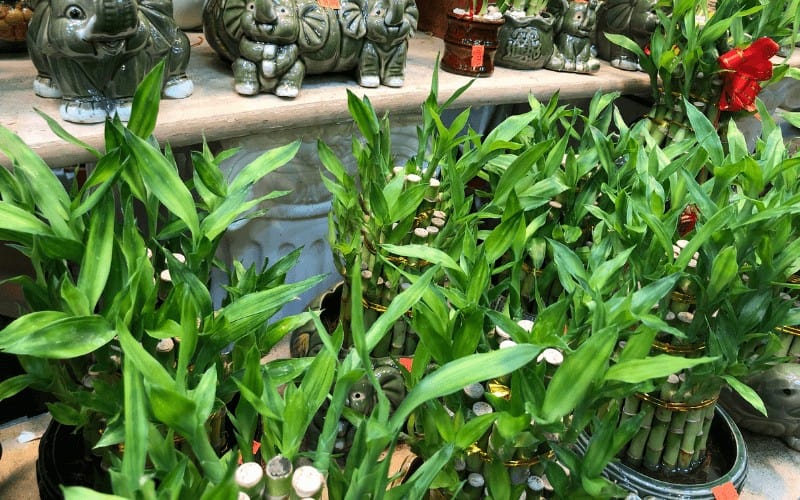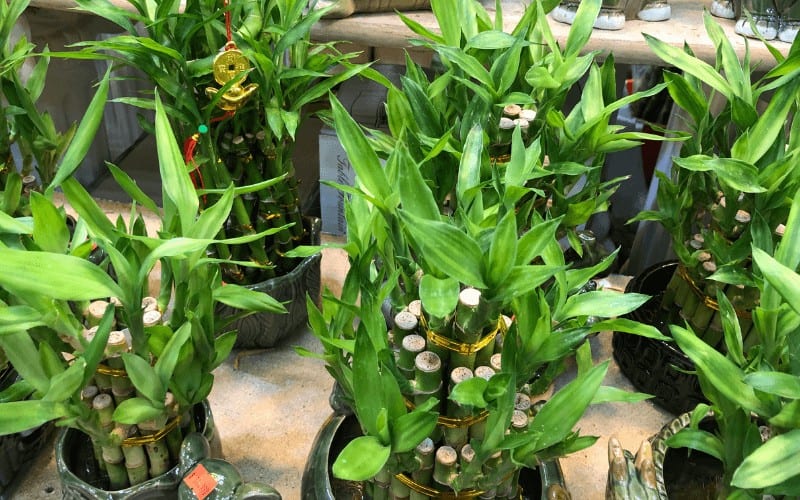Dracaena sanderiana is the scientific name of lucky bamboo and even though it has ‘bamboo’ attached to its name, it is not botanically a bamboo. This plant has its origins in Asia where they revere it as something that could bring luck and happiness, hence the name.
One reason most botanists and gardeners love this plant is that it is quite easy to cultivate. The plant, lucky bamboo can grow in water, in the soil, or even in rocks. In this article, we will show you how to repot lucky bamboo plant in rocks.
Table of Contents
Why Should I Repot My Lucky Bamboo Plant?
Growing your lucky bamboo plant in an unfavorable condition could result in adverse reactions from the plant. For optimum results, here's why you should report your plant.
1. To Enhance the lucky bamboo's growth
It is in the bamboo’s nature to spread and in most cases outgrow the pot and when this happens there is a need to repot.
2. To Give the Lucky Bamboo a Chance to Grow in a Conducive environment
Bamboos grow vigorously and would not grow well in tight containers, this distorts the air they breathe. Re-potting them would be the best option.
3. To Save the Lucky Bamboo from Perceived threats
Growing plants require care and close attention, and thanks to you, you may have sensed a potential threat to your plant's life.
You have probably perceived your plant might be under attack from dreadful pests; bamboo mites, mealybugs, termites, aphids, and fungal spots.
While treating would be a go-to-option, if the pest infestation persists, to ensure they don’t stunt your plant’s growth, you have to take necessary actions by repotting.
4. To Give Your Plants Fresh Rocks For Nutrients
Plants need a fresh source of nutrients once in a while. The root needs to supply nutrients to the plant, and with these nutrients, the plant will keep growing well.
Read Also: How to Remove Root Bound Plants From Pots
How to Repot Lucky Bamboo Plant in Rocks

First of all, here are the things you need to repot bamboo plants in rocks:
- Rocks
- Dust cloth
- Water
- Pots
Now that you already know the best materials you need, when to repot your plants, let’s begin repotting with this detailed guide.
The lucky bamboo is one plant that can grow and even thrive when gardeners plant it in rocks. A good thing about it is that once you plant or repot a lucky bamboo properly, it will thrive with little or no attention.
Even people who have no experience with gardening can effectively grow lucky bamboo.
All the lucky bamboo needs to thrive is for the roots to get enough water. If you have planted lucky bamboo and have seen that it has overgrown the pot, then it is time to replant, and here is step-by-step guidance on how to report lucky bamboo in rocks.
1. Prep Your Space
First things first, make sure the spot for your repot is free of germs, more so, preparing your space would include organizing yourself. Make sure your pieces of equipment are clean. Wear your gloves properly.
2. Gather Your Rocks
Get a new and larger pot and then gather your rocks. Wash them under running water with a brush.
This is to get rid of any virus or disease-causing organisms that might be present. Place the rocks inside the new pot till you fill a third of the pot.
3. Add Water
Get water into the pot. Let it reach halfway. Ensure that the water you are using has no trace of fluoride and chlorine.
If you treat your water with chlorine, pour out a reasonable amount and let it stay outside for one full day. This will make all the chlorine evaporate from the water.
But if your water has fluorine, you will need another water, most preferably, distilled water because fluorine will not evaporate.
The reason you should not use water that contains fluorine or chlorine is that they are both strong chemicals and will kill the lucky bamboo plant in few weeks. So, to avoid your plant dying, ensure the water is chlorine or fluorine-free.
4. Remove the Bamboo from the Old Pot
Gently pull out the lucky bamboo from the old pot. While you are pulling out the lucky bamboo, check its stalks and roots.
If you see any yellow stalk or roots, separate those from the rest as that is a sign that something is wrong with those stalks and roots.
5. Place the Lucky Bamboo Canes in the New Pot
Place the lucky canes into the pot till the roots are almost reaching the bottom of the pot.
If the bamboo does not stay standing, use the rocks available to support it. The lucky bamboo should stay submerged in the water.
6. Place the Lucky Bamboo at a Choice Spot
Keep the plant where some bits of sunshine can get to it. Anywhere you keep it in the house is good so far it is not getting direct sunlight.
7. Changing the Water Weekly
You can add water to the pot once or twice daily. Cover the rocks, not the stalks. The key is to cover the rocks with water but does not overwater like their bodies out in the open for air and sunlight.
Note: chlorine, fluoride, and salty water are great No’s! While you might let out chlorine by leaving it out in the sun for 24 hours, fluoride cannot evaporate, get a distilled water. More so, salty water would burn your plant, so avoid it.
8. Clean Your Environment
Now that you are done with re-potting, remember to clean your environment so you do not invite unwanted guests.
Note: It is normal for your plant to react to changes after re-potting. For this reason, below are some helpful tips to keep your plant smiling.
How To Take Care of Lucky Bamboo after Repotting

Controlling Pests
Just like any other plant, lucky bamboo has pests that worry it. Examples of some of these pests are spider mites, algae, mealybugs, and fungus.
With a multi-purpose insecticide, you can get rid of mites and mealybugs. You can handpick the mealybugs, or you can apply alcohol to the plant, both can work.
Fertilization
The lucky bamboo plant is quite easy to cultivate and quite easy to take care of. Hence, the plant does not require you to do much fertilization.
The water and the rocks in which you planted the bamboo have a lot of nutrients and can serve your plant well. If you must fertilize the lucky bamboo plant, do so three times a year.
Over-fertilizing does not help the plant. Instead, it will damage it in unexpected ways. The plant will suddenly have issues and then die off.
The best way to add fertilizer to your lucky bamboo is to get a houseplant that can dissolve in water. After dissolving it in water, only use a tenth of the fertilizer.
Sunlight
Lucky bamboo is a perfect indoor plant, and this means it does not need too much sunlight. It is sensitive to the full glare of the sun.
If you put the lucky bamboo under the sun directly, it will get sunburnt and will get scorched leaves. All your plant needs are indirect sunlight. You can place it near a balcony or window where it will get filtered sunlight.
Water
You do not need to add much water to the plant as it is good with a minimal amount of water. When you water the plant, let the water cover only the roots, not the whole plant.
Always change the water weekly or at most every 10 days so that algae do not grow on top of the rocks. Remember not to use water with fluorine, chlorine, or salts to water your plant.
Humidity
You should not worry about humidity when repotting lucky bamboo in rocks. The water and the rock will create good humidity for your plant.
You may also like the following posts:
- Hoya Krimson Princess Growing Tips
- Types of Lithops Plant
- How To Grow Dumb Cane Plant
- When To Plant Gladiolus Bulbs
- Can I Leave Gladiolus Bulbs In The Ground?
Conclusion
Following the steps on how to repot lucky bamboo plant in rocks will give you the best results. It is imperative to remember that the plant is sensitive to water and sunlight.
You will do well to help it get both in small measures. One of the few ways to ensure that the plant gets the only paltry amount of light is to keep it indoors.
Also, the pot you will use for the planting should have proper drainage. This will also help in creating good humidity for your plant. If you take care of these factors, sit back, and watch your lucky bamboo bloom.




